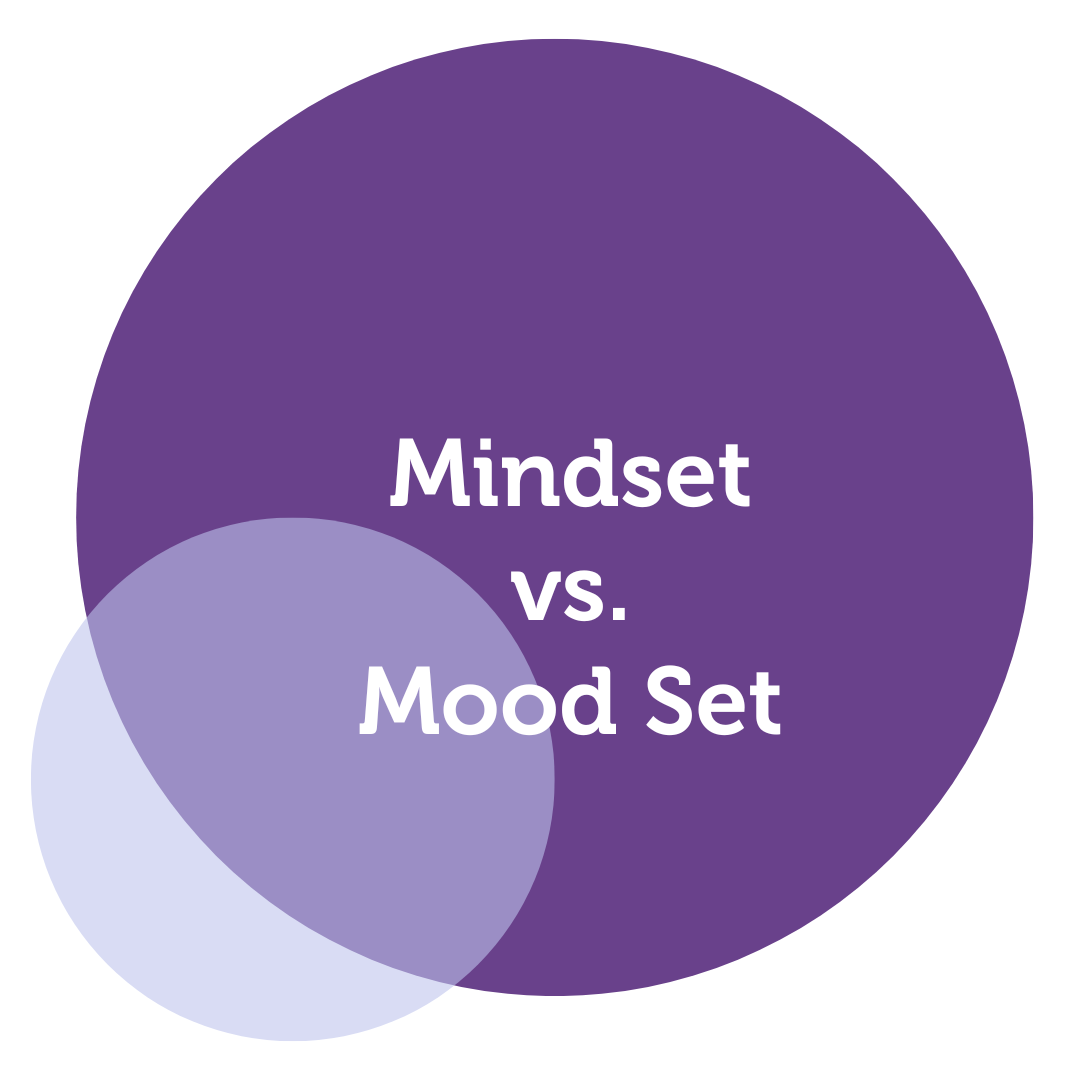A Coaching Power Tool By Elmarie Cronje, Life Coach, SOUTH AFRICA

Mindset vs. Mood Set: Find your truth to shift…..
The core of my coaching and coaching approach will be to coach my clients to start unearthing and discerning their truth. Between all the external and internal influences, past experiences, and fear of an uncertain future, they start transforming when they discover their real motivations, what is serving them, what is holding them back, and how they can use this to be a part of their sense of belonging and transformation, and when is it keeping them apart from what they want, need, and want to become.
In essence, self-leadership revolves around the premise of leading oneself toward success. It’s about having the initiative and responsibility to manage growth and performance. Effective self-leadership can lead to improved productivity, better stress management, greater job satisfaction, and increased personal and professional development capacity.
What Is the Difference Between Mindset vs. Mood Set
Mindset: Refers to beliefs, attitudes, and thoughts that determine one’s approach to situations, challenges, and life in general. It is the lens through which we perceive and interpret our world. Common examples include a “fixed mindset” (believing abilities and talents are innate and static) versus a “growth mindset” (believing skills can be developed through effort and persistence). Typical, expected duration: Tends to be more enduring and stable. While it can be changed, doing so usually requires conscious effort, time, and practice of continuous mindfulness.
Moodset: Refers to one’s prevailing emotional state or mood at a given time. This could be happiness, sadness, excitement, anger, etc. Unlike mindset, which tends to be more stable and long-term, moodset can fluctuate frequently based on factors like environment, physiological state, experiences, or interactions. Typical, expected duration: Is more transient and can shift multiple times daily based on external and internal triggers.
How Will This Assist in Self-Leadership and Transformation?
This power tool facilitates shifts in clients’ thinking, allowing them to unearth personal solutions and strategies. Rather than providing short-term fixes, transformative coaching emphasizes enduring alterations in clients’ beliefs, behaviors, and thought processes. The goal is to move the client from their current state to their desired future state, emphasizing personal growth and reframing perspectives. Coaching’s true potency lies in its capacity for transformation rather than mere change. While change denotes temporary adjustments to achieve specific outcomes, transformation signifies long-term, holistic shifts in structure, mindset, and condition. For instance, changing careers involves using existing skills in a new company, while transformation might mean altogether leaving one’s profession for an entrepreneurial venture, necessitating a comprehensive mindset shift. Achieving these “ah-ha” moments is foundational for genuine transformation, as they herald a deepened self-awareness and alignment on multiple levels.
Thinking about how our mood influences our goals and using this tool as a gauge when we are such, or feeling negative emotions, might lead to shifts in our self-awareness.
As a Coach:
Be aware and create awareness of the Influence of moods and mindset.
Mindset influence: Directly influences one’s behavior, decision-making, and reactions to challenges and opportunities. For instance, someone with a resilient mindset might see failures as learning opportunities.
Moodset Influence: Influences how one feels in the moment. For example, a bad mood might make someone more reactive or less patient, but it doesn’t necessarily indicate a person’s overall attitude or belief about challenges.
Be curious and assist the client to discover Root Causes, as some examples below:
Mindset: Can be formed over the years based on upbringing, experiences, cultural background, education, and personal reflections.
Moodset: This can be influenced by immediate factors like physical health, sleep quality, interactions, environment, and even dietary choices.
Discover the Impact:
Mindset: Has a long-term impact on one’s life trajectory, success, and well-being. It affects how one approaches challenges, learns new skills, and interacts with others.
Moodset: Has a short-term impact on one’s day-to-day interactions, decisions, and feelings. While a prolonged negative mood set (like chronic sadness) can hint at more profound issues, short-term mood fluctuations are a natural part of the human experience.
Coaching Approach and Question That Could Assist:
Helping clients differentiate between moodset and mindset can be instrumental in fostering self-awareness. Here are some coaching questions tailored to help with this exploration:
Exploring Moodset:
- How would you describe your current emotional state or mood?
- Can you describe or recall what might have triggered this mood today or recently?
- How often do you find yourself in this mood? Are there patterns or common occurrences?
- How does this mood influence your decisions and interactions?
- What immediate actions, situations, or triggers tend to shift your mood positively or negatively?
- How do you usually cope with or manage an undesirable mood?
- Are there specific times of day, activities, or situations where you notice a significant shift in your mood?
Coaching Questions When Investigating Mindset:
- How would you describe your general outlook on challenges: as threats or opportunities?
- What are some core beliefs you hold about yourself and your abilities?
- How have these beliefs influenced your actions and decisions over the years?
- Can you recall any experiences or teachings from your past that might have shaped these beliefs?
- How does your mindset serve you in achieving your goals? In what ways might it hinder you?
- Are there moments when you’ve consciously tried to shift or adjust your mindset? What prompted that?
Coaching Questions That Can Assist You in Bridging Moodset And Mindset:
- Can you identify any interplay between your moods and your more profound beliefs? For example, do certain moods make you more likely to lean into negative or positive beliefs about yourself?
- How might your mindset influence your mood on a day-to-day basis? And vice versa, how might your mood provide insights into your underlying mindset?
- Are there specific moods that make it challenging to maintain a growth or positive mindset? How do you navigate that?
- What strategies or practices might help you ensure that temporary moods don’t overshadow your long-term mindset?
- How can you leverage your understanding of moods and mindset to better align with your goals and aspirations?
Coaching Questions That Can Lead to Addressing Self-Awareness:
- What insights or patterns have you noticed about your mood and mindset as we’ve explored these questions?
- How can greater awareness of your mood set versus mindset support you in your personal or professional life?
- In moments of introspection, what tools or strategies can you use to discern whether your mood or your mindset influences your perspective?
- How might increasing self-awareness in this area empower you in your relationships, work, and personal growth?
- These questions are designed to be conversation starters and may need to be tailored based on the specific nuances and experiences of the client. As always in coaching, active listening, empathy, and non-judgmental curiosity are essential.
In summary, while both mindset and mood set play crucial roles in determining our reactions, behaviors, and overall life experience, they operate on different timelines and depths. Mindset is the foundational belief system guiding our perceptions, while moodset is our fluctuating emotional state influenced by various factors. Understanding the distinction can help individuals better navigate their emotions and beliefs in different situations.
References
Building Your Reflection Practice: Self-Coaching Questions for Coaches
20 Powerful Mindset Coaching Questions [For 2023]
Self-Coaching Model: 56 Questions & Tools (+ CTFAR Model)
https://www.psychologytoday.com/gb/blog/coaching-corner/202101/coaching-change-vs-coaching-transform







